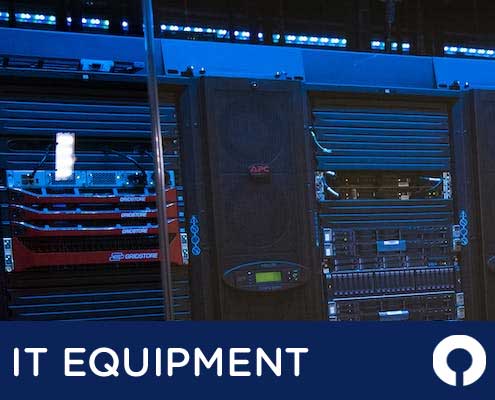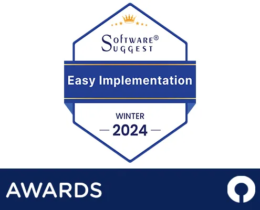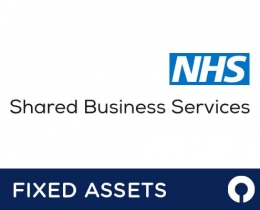How to Calculate the Useful Life of an Asset
IT equipment can be obsolete fast, so it’s important to know how to calculate equipment’s depreciation value. Here’s how to do it.

IT equipment can be obsolete fast, so it’s important to know how to calculate equipment’s depreciation value. Here’s how to do it.

From laptops and monitors to printers and hard drives, any IT equipment your organisation uses to produce income can be depreciated. For this equipment, calculating depreciation accurately can be challenging due to the rapidly changing technology landscape and the speed at which IT equipment becomes obsolete. So, how do you capitalise and depreciate IT equipment? And what depreciation methods are best to use when these assets tend to lose value quickly due to obsolescence?
In this article, we will provide a comprehensive guide on how to calculate depreciation for IT equipment, covering everything from the different methods available to the factors you need to consider. Whether you are a finance professional or an IT manager, this article will provide you with the knowledge and tools you need to accurately calculate depreciation and expense your computer and IT assets over time.
If an IT asset meets these criteria, it can be capitalised and its cost can be allocated over its useful life through depreciation. The cost of the IT equipment includes not only the purchase price but also any related costs such as installation and testing expenses.
It is important to note that once an IT asset is capitalised, its cost cannot be charged to expenses until it reaches the end of its useful life and is fully depreciated.
The useful life of an IT asset is the estimated length of time that the asset is expected to be in service and provide economic benefits to the company. Without an estimated useful life, it’s impossible to calculate depreciation. Nonetheless, the actual useful life may end up being longer or shorter than your estimate due to a range of factors.
To approximate useful life of IT equipment, first look to the industry-specific accounting guidelines or standards, or the manufacturer’s recommendations. Historical data from the organisation’s past records of IT assets can also inform this estimate. Finally, IT or finance experts can also help provide an informed estimate of useful life for computer and IT assets.
Moreover, organisations should periodically review and update their estimates of the useful life of their IT assets to ensure that their depreciation calculations are accurate and up-to-date.
There are multiple methods of depreciation that a business may use, but for IT equipment the most appropriate types are double declining and sum of the year’s digits. This is because these two methods charge higher depreciation in the asset’s initial useful life. Here’s a closer look at some common depreciation methods and why DDB and SYD are the most relevant methods for IT assets,
The simplest method of depreciation, the calculation for the straight-line method is the cost of the asset divided by years of useful life. While this depreciation method is easy to calculate, it may not accurately reflect the asset’s value over time. This is why it is less useful for IT assets.
Straight-line depreciation formula: Cost of asset / useful years
While straight-line depreciation allocates the cost of an asset equally across each year of its useful life, the double declining balance (DDB) method allocates higher expenses at the start of an asset’s useful life and lower expenses towards the end. This accounting method depreciates IT business assets at twice the rate of the straight-line formula, which is especially useful when accounting for IT assets that lose their value rapidly at the beginning of their useful life.
Double declining depreciation formula: Straight-line depreciation percentage x book value at the beginning of the period x 2
Sum of year’s digits (SYD) depreciation is another accelerated method for calculating depreciation, like the DDB accounting method. With these depreciation schedules, depreciation is higher in the early years and lower in the later ones.
To calculate SYD depreciation, you must add together the digits of the number of years of the IT asset’s expected useful life. For example, if you expect to use a monitor for five years, this would mean 1 + 2 + 3 + 4 + 5 = 15. Then each digit is divided by the answer, which gives you the percentage that monitor should be depreciated in each year.
This means that the depreciation schedule appears as follows for a monitor with a useful life of 5 years:
First year: 5 / 15 = 33%
Second year: 4 / 15 = 27%
Third year: 3 / 15 = 20%
Fourth year: 2 / 15 = 13%
Fifth year: 1 / 15 = 7%
In conclusion, calculating depreciation for IT assets can be a complex process due to the unique nature of these assets. In contrast to other tangible assets, IT assets may have a shorter useful life and a rapid rate of obsolescence as a result of technological advancements. Consequently, IT or finance professionals must consider a variety of factors when calculating depreciation for IT equipment, including the asset’s expected usage, the rate of obsolescence, and the choice of depreciation method.
Want to streamline your depreciation calculations with automation, advanced reporting, and highly flexible accounting software? FMIS can help. Our powerful fixed asset management software can help you save hundreds of hours and boost accuracy with automated depreciation calculations. Request a demo today or contact us to find out more about how FMIS can help with all your IT asset needs.
For more information on how FMIS can help you effectively track and manage your assets and equipment, please get in touch with an FMIS consultant or call us on +44 (0) 1227 773003.




Calculating the useful life of an asset is essential. Here’s how and why to do it.
Despite our hopes and best efforts, fixed assets don’t last forever. Equipment gains wear and tear; machinery becomes outdated or obsolete; there comes a point where repairing an asset simply becomes less cost-effective than replacing it. Even the best-maintained building or piece of land will eventually stop contributing to revenue and become a money sink instead.
To acknowledge this reality, calculating an asset’s useful life is important. In this article, we’ll take a closer look at what useful life is, what impacts it, why it’s important, and how to calculate it.
An asset’s useful life is the estimation of how long it can be used for in order to be beneficial to the company — in other words, the amount of time that it can be used to generate revenue. While an asset such as a piece of machinery, vehicle, or equipment may be operational for many years, the asset’s useful life is often shorter.
It’s important to note that when we talk about the useful life of assets, we’re talking specifically about fixed assets. These are typically assets that are used by an organisation to generate revenue for longer than a year, for example, the equipment used to manufacture a product. In contrast, a product that is manufactured and sold for profit is a current asset. It’s not important to calculate the useful life of a current asset because these are usually expected to be disposed of or sold within a year.
Let’s take the example of a vehicle. A tangible asset that can often be used for many years, vehicles nonetheless gain wear and tear over time, might need to be fixed or have parts replaced, or might simply become obsolete due to technological improvements. At some point, the cost of repairing the vehicle will outweigh the value that the asset generates for the business. So, although the vehicle technically can still undergo maintenance and repairs for continued use (its actual lifespan), this becomes so costly that the asset turns into a liability. Therefore, the asset has reached the end of its useful life.
An asset is assigned a useful life when acquired, but this life span may change for various reasons. This is called a re-life. Typically, an asset will be re-lifed when something happens to the asset, which means the useful life will be shorter or longer than originally planned. A vehicle may have an initial useful life of five years, but after three years, it is decided that the vehicle’s useful life can be extended by another five years through scheduled maintenance. In this case, the previous depreciation periods remain unchanged, but future periods will be adjusted to reflect the new lifespan based on the current net book value (NBV).
The exact same asset may have a different useful life when used by different businesses. For example, a piece of machinery that is expected to have a useful life of ten years by one company may have a longer useful life in a different organisation. This is because useful life is impacted by a range of factors, including how frequently the business uses the asset and how complex equipment is maintained.
Even the condition and location of the business environment can impact an asset’s useful life – for example, if the asset is located in an area prone to natural disasters or extreme climate, this can also have an impact on the useful life calculation.
Technological improvements can also impact the useful life of an asset if it is likely to become obsolete soon. In this case, for example, the asset itself may still be operational, but other more up-to-date assets may be in use, making it more costly to continue using an outdated and incompatible asset than to replace it with a new one.
Finally, wider changes can also impact the useful life of an asset. For example, an economic or legal change may be a factor in estimating useful life.
Useful life estimates are important in accounting for a few reasons. Firstly, the estimate allows you to decide how long to keep an asset before replacing it. As well as helping you plan maintenance schedules and methods, this also allows you to make informed decisions about whether to repair or replace the asset towards the end of its useful life.
For example, if a piece of equipment has a useful life of five years but needs major and costly repairs after four and a half years, the useful life is a factor in deciding whether to repair or replace it.
Useful life calculations are also important in financial planning and forecasting because they provide an indication of when a replacement asset will need to be purchased. This means that budgets can be created accordingly.
Moreover, it’s important to calculate useful life for accurate depreciation calculations. Depreciation spreads the cost of an asset over its useful life and reflects the changing value of the asset over time.
To demonstrate the importance of useful life in calculating how an asset depreciates in value over time, let’s look at the example of the straight-line depreciation method. This is the most common method of depreciation and is very straightforward to calculate because the expense amount is the same every year of the asset’s useful life. The formula for the straight-line method is as follows:
Annual depreciation expense = (cost of the asset – salvage value) / useful life of the asset
In other words, to find the annual depreciation expense of an asset, first subtract the salvage value from its purchase price, then divide this figure by the useful life.
Besides straight-line, other depreciation methods include double-declining balance, units of production, and sum of years depreciation. All these depreciation methods are calculated using the asset’s useful life.
Unlike the various methods for depreciation, there’s no single formula to determine the useful life of an asset – it’s an estimated number rather than an exact calculation. The useful life will be different for the same asset in the same condition if it is used in different ways, businesses, and locations.
Despite this, there are some useful resources that can make it easier to calculate useful life. The United States Internal Revenue Service (IRS) has a list of useful lives and depreciation standards for most types of tangible assets. Other industry bodies provide estimates for assets specific to different sectors, such as real estate, oil, gas and energy, or manufacturing.
Furthermore, some types of assets—such as machinery—have a specified expiration date, which provides an indication of the useful lifespan. Equipment manuals may provide this information. Sometimes the estimated lifespan as given by the manufacturer is given in hours or cycles, which means that you can estimate a more accurate useful life based on how frequently the asset is used. Of course, the useful life may not be equivalent to the expiration date, but this is a good starting point.
Then, it’s important to incorporate other factors that impact useful life, such as the condition of the asset (was it new or used when you bought it?), the location (is it somewhere prone to humidity, earthquakes, or any other conditions that might shorten its useful life?), and the maintenance method your organisation uses (do you use preventative maintenance, reactive maintenance, or another type?).
If your organisation has owned the same asset in the past, the useful lifespan of this asset or assets can also inform the estimate for the new one. If the asset always lasts longer than the IRS’ estimations, for example, this can be taken into account.
However, even once you’ve taken all of these factors into account, there are still other unpredicted changes that can impact the useful life of an asset. This is where adjustments come into play. As discussed above, the useful life estimate for an asset may have to be adjusted or re-lifed as time goes on.
With the estimated useful life of an asset liable to change over time, it’s important to have an effective asset management strategy using powerful software to keep track of your assets throughout their lifecycles.
For example, the FMIS Fixed Asset Management Solution provides a full-featured customisable database for all your asset information while automating depreciation accounting and empowering your team. With our fixed asset management module, it’s easier than ever to record assets’ full history of adjustments, transfers, disposals, and other events. Moreover, it’s possible to work across multiple companies, countries, and books with ease using the flexible and intuitive tool.
For more information on how FMIS can help you effectively track and manage your assets and equipment, please get in touch with an FMIS consultant or call us on +44 (0) 1227 773003.
 https://www.fmis.co.uk/wp-content/uploads/2025/04/Capital-Expenditure-Tariffs-495x400-1.webp
400
495
John de Robeck
https://www.fmis.co.uk/wp-content/uploads/2016/07/FMIS-logo-340x156.png
John de Robeck2025-05-14 16:20:132025-06-04 11:05:01How Tariffs Are Transforming Capital Expenditure Strategy
https://www.fmis.co.uk/wp-content/uploads/2025/04/Capital-Expenditure-Tariffs-495x400-1.webp
400
495
John de Robeck
https://www.fmis.co.uk/wp-content/uploads/2016/07/FMIS-logo-340x156.png
John de Robeck2025-05-14 16:20:132025-06-04 11:05:01How Tariffs Are Transforming Capital Expenditure Strategy https://www.fmis.co.uk/wp-content/uploads/2024/12/Depreciation-Review-495x400-1.webp
400
495
John de Robeck
https://www.fmis.co.uk/wp-content/uploads/2016/07/FMIS-logo-340x156.png
John de Robeck2024-12-18 15:04:412025-06-09 13:27:31What is a Depreciation Review and when is it needed?
https://www.fmis.co.uk/wp-content/uploads/2024/12/Depreciation-Review-495x400-1.webp
400
495
John de Robeck
https://www.fmis.co.uk/wp-content/uploads/2016/07/FMIS-logo-340x156.png
John de Robeck2024-12-18 15:04:412025-06-09 13:27:31What is a Depreciation Review and when is it needed? https://www.fmis.co.uk/wp-content/uploads/2024/12/G-Cloud-14-approved-supplier-495x400-1.webp
400
495
John de Robeck
https://www.fmis.co.uk/wp-content/uploads/2016/07/FMIS-logo-340x156.png
John de Robeck2024-12-05 16:00:312025-06-09 13:35:55G-Cloud 14 Approved Supplier
https://www.fmis.co.uk/wp-content/uploads/2024/12/G-Cloud-14-approved-supplier-495x400-1.webp
400
495
John de Robeck
https://www.fmis.co.uk/wp-content/uploads/2016/07/FMIS-logo-340x156.png
John de Robeck2024-12-05 16:00:312025-06-09 13:35:55G-Cloud 14 Approved Supplier https://www.fmis.co.uk/wp-content/uploads/2024/10/PASF-Secure-Hosting-copy.webp
400
495
John de Robeck
https://www.fmis.co.uk/wp-content/uploads/2016/07/FMIS-logo-340x156.png
John de Robeck2024-10-22 09:46:362025-06-09 13:39:32FMIS Secures Police Assured Secure Facilities (PASF) Certification
https://www.fmis.co.uk/wp-content/uploads/2024/10/PASF-Secure-Hosting-copy.webp
400
495
John de Robeck
https://www.fmis.co.uk/wp-content/uploads/2016/07/FMIS-logo-340x156.png
John de Robeck2024-10-22 09:46:362025-06-09 13:39:32FMIS Secures Police Assured Secure Facilities (PASF) CertificationFMIS Ltd
167b John Wilson Business Park
Whitstable
Kent
CT5 3RA
United Kingdom
Phone:+44 (0) 1227 773003
Fax:+44 (0) 1227 773005
Sales:sales@fmis.co.uk
Support:support@fmis.co.uk

 Best Practices for Inventory Management
Best Practices for Inventory Management| Cookie | Duration | Description |
|---|---|---|
| cookielawinfo-checkbox-advertisement | 1 year | Set by the GDPR Cookie Consent plugin, this cookie is used to record the user consent for the cookies in the "Advertisement" category . |
| cookielawinfo-checkbox-analytics | 11 months | This cookie is set by GDPR Cookie Consent plugin. The cookie is used to store the user consent for the cookies in the category "Analytics". |
| cookielawinfo-checkbox-functional | 11 months | The cookie is set by GDPR cookie consent to record the user consent for the cookies in the category "Functional". |
| cookielawinfo-checkbox-necessary | 11 months | This cookie is set by GDPR Cookie Consent plugin. The cookies is used to store the user consent for the cookies in the category "Necessary". |
| cookielawinfo-checkbox-others | 11 months | This cookie is set by GDPR Cookie Consent plugin. The cookie is used to store the user consent for the cookies in the category "Other. |
| cookielawinfo-checkbox-performance | 11 months | This cookie is set by GDPR Cookie Consent plugin. The cookie is used to store the user consent for the cookies in the category "Performance". |
| CookieLawInfoConsent | 1 year | Records the default button state of the corresponding category & the status of CCPA. It works only in coordination with the primary cookie. |
| PHPSESSID | session | This cookie is native to PHP applications. The cookie is used to store and identify a users' unique session ID for the purpose of managing user session on the website. The cookie is a session cookies and is deleted when all the browser windows are closed. |
| viewed_cookie_policy | 11 months | The cookie is set by the GDPR Cookie Consent plugin and is used to store whether or not user has consented to the use of cookies. It does not store any personal data. |
| Cookie | Duration | Description |
|---|---|---|
| CONSENT | 2 years | YouTube sets this cookie via embedded youtube-videos and registers anonymous statistical data. |
| _ga | 2 years | The _ga cookie, installed by Google Analytics, calculates visitor, session and campaign data and also keeps track of site usage for the site's analytics report. The cookie stores information anonymously and assigns a randomly generated number to recognize unique visitors. |
| _gat_UA-48954022-1 | 1 minute | A variation of the _gat cookie set by Google Analytics and Google Tag Manager to allow website owners to track visitor behaviour and measure site performance. The pattern element in the name contains the unique identity number of the account or website it relates to. |
| _gid | 1 day | Installed by Google Analytics, _gid cookie stores information on how visitors use a website, while also creating an analytics report of the website's performance. Some of the data that are collected include the number of visitors, their source, and the pages they visit anonymously. |
| Cookie | Duration | Description |
|---|---|---|
| VISITOR_INFO1_LIVE | 5 months 27 days | A cookie set by YouTube to measure bandwidth that determines whether the user gets the new or old player interface. |
| YSC | session | YSC cookie is set by Youtube and is used to track the views of embedded videos on Youtube pages. |
| yt-remote-connected-devices | never | YouTube sets this cookie to store the video preferences of the user using embedded YouTube video. |
| yt-remote-device-id | never | YouTube sets this cookie to store the video preferences of the user using embedded YouTube video. |
